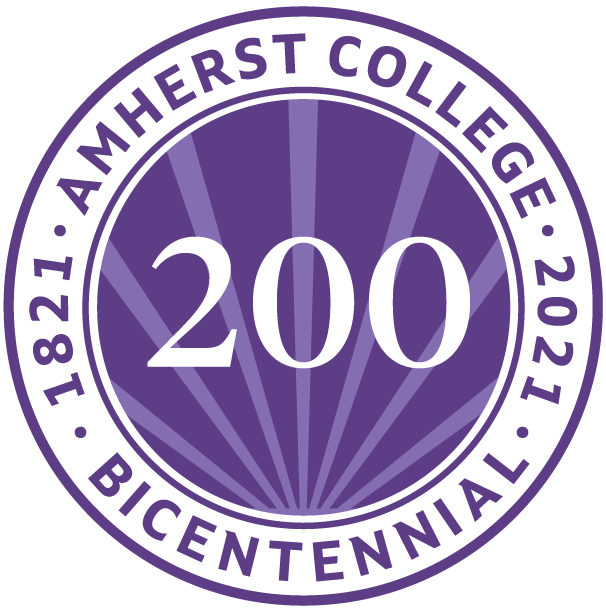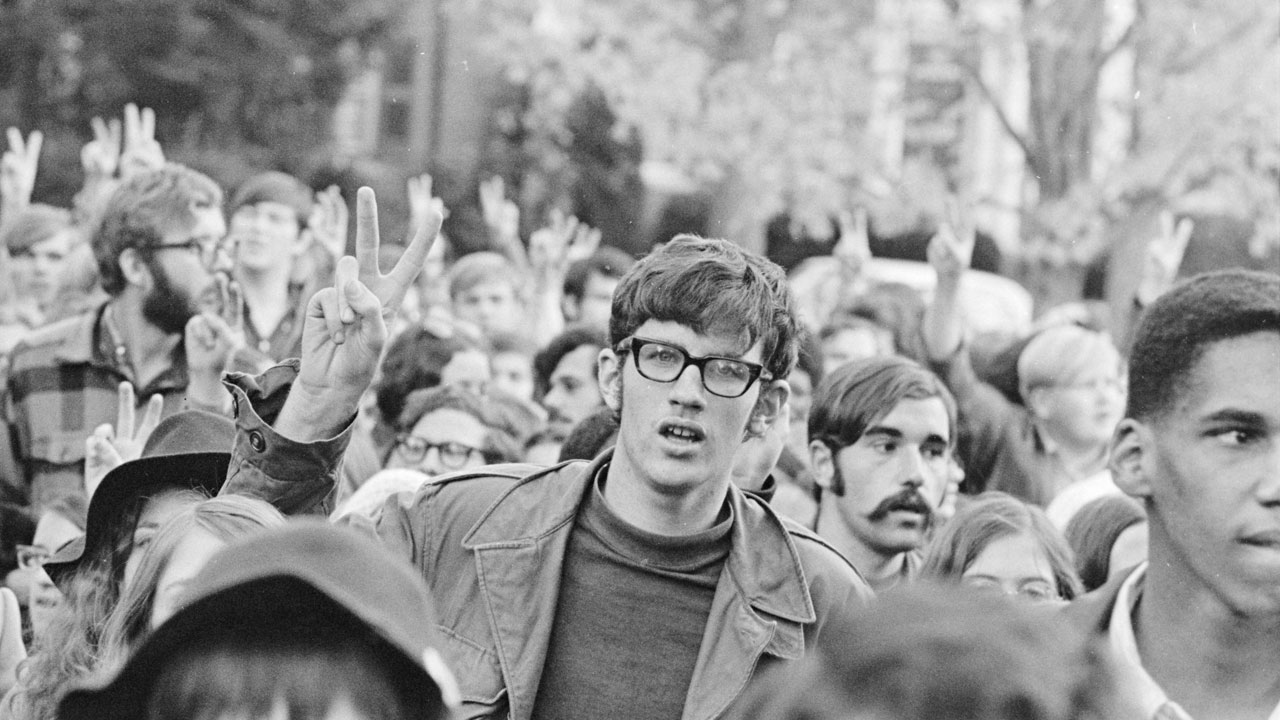
On the occasion of Amherst’s Bicentennial, we present an excerpt from Eye, Mind, Heart: A View of Amherst College at 200, one of the keepsake Bicentennial books commissioned by the College.
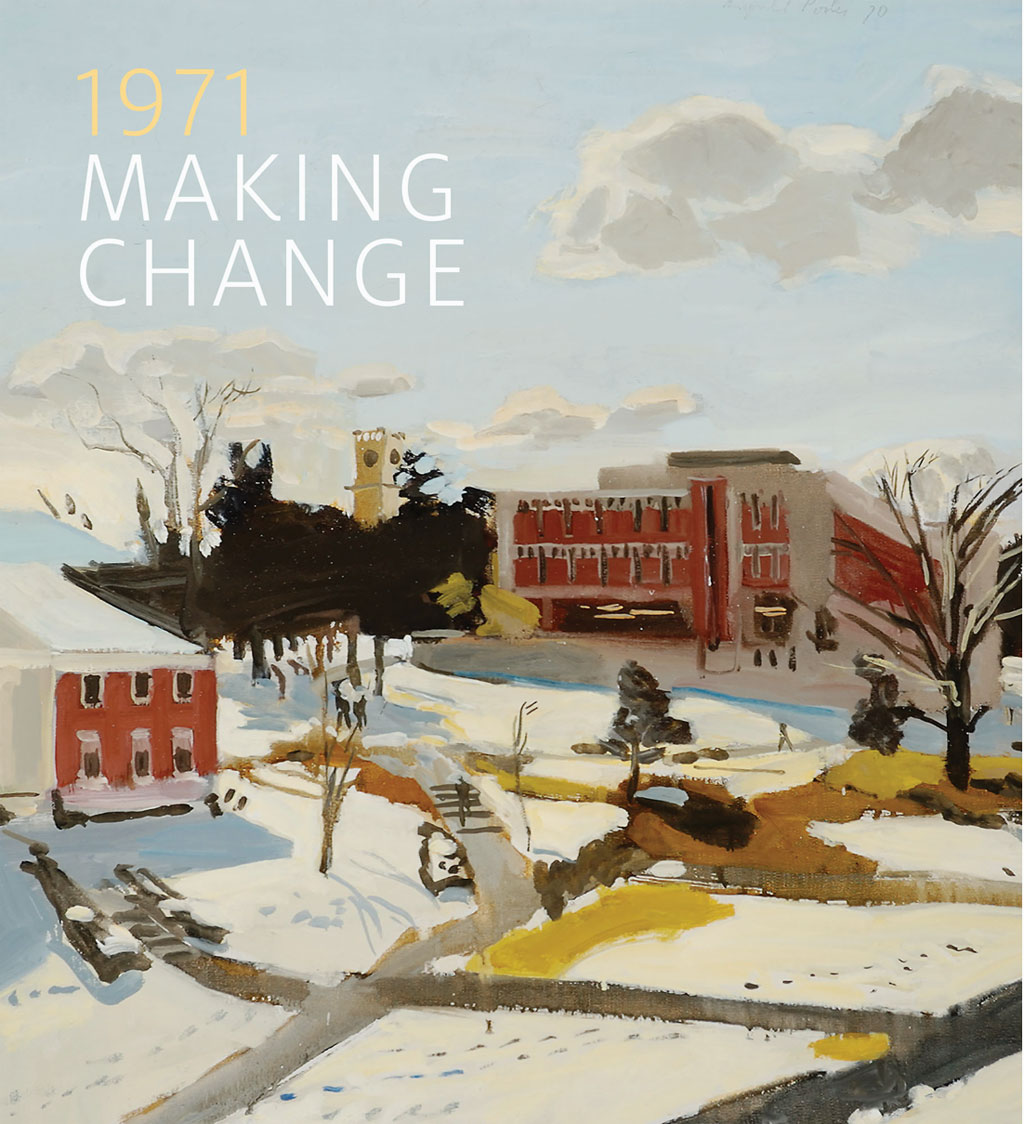
President John F. Kennedy spoke at the groundbreaking ceremony for the Robert Frost Library on October 26, 1963, less than a month before he was assassinated. Fairfield Porter, the painter of this landscape-with-library, spent 1969-70 at Amherst as a visiting artist. (Fairfield Porter. The Campus, 1970. Reproduced by permission of Parrish Art Museum, Water Mill, NY. Gift of the Estate of Fairfield Porter)
Welcome to Amherst.
In the era of sex, drugs and rock ’n’ roll, Amherst undergoes what one member of the class of 1971 calls “four years of constant turmoil.” This period of student activism begins at Amherst in 1966, when 20 seniors walk out of the Commencement ceremony to protest Secretary of Defense Robert S. McNamara’s receipt of an honorary degree. McNamara has been a powerful advocate for escalating the war in Vietnam.
In the years to follow the campus is rocked by several major actions:
The Moratorium, April 1969: Spurred by student protest, classes are suspended for two days to discuss the war, race relations and coeducation. The faculty votes to add a Black Studies program in the following academic year.
The Takeover, February 1970: African American students from all five colleges take over several buildings, including Converse Hall, to advocate for increased Black enrollment, more resources and a Black professor of Black Studies.
Student Strike, May 1970: Amherst students participate in the nationwide student strike in protest of the Vietnam War. Following the Kent State killings of four unarmed student protesters in Ohio, the Amherst faculty supports a student proposal to cancel classes until the end of the semester.
The Vietnam War looms over everything. In actuality, few Amherst graduates serve in the military unless they choose to, given that college students are eligible for draft deferments that can be extended until age 24. The draft ends in early 1973. Amherst’s new president, John William Ward, is inaugurated in 1971. He will make national headlines in May 1972, when he is arrested at an antiwar demonstration, along with 500 others, at nearby Westover Air Force Base.
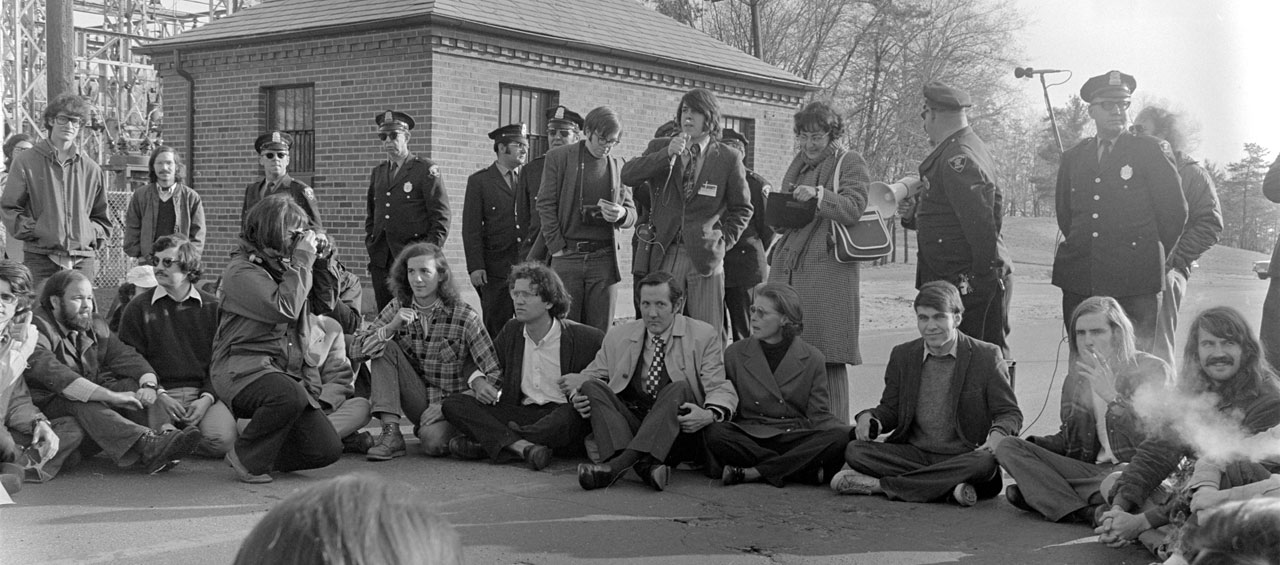
President Ward (seated middle) joins students at an antiwar demonstration at Westover Air Force Base in 1972 (William Rosser)
The night before his arrest, he announces his decision to join the protest in the speech he gives to students in Johnson Chapel. In his statement, he refers to President Richard Nixon’s decision to mine Vietnam’s Haiphong Harbor: “Night before last, a student called my home and left word with my wife that he and other students hoped I would write a letter. Write a letter! To whom? One feels like a child throwing paper planes against a blank wall.” Ward is the only college president arrested for protesting against the war.
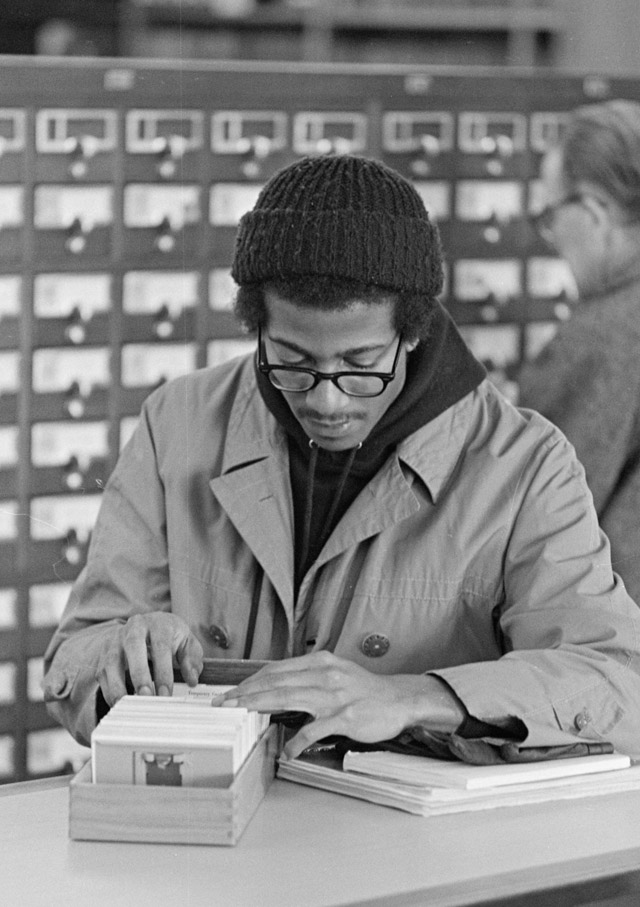
Using the library in 1971 (Jim Gerhard)
In 1971 Amherst’s catalog states for the first time: “Admission to Amherst College is highly competitive.” The acceptance rate stands at about 20 percent. Retiring in 1971 is Eugene “Bill” Wilson ’29 as dean of admission. During his 25 years on the job, he has made Amherst less of a gentlemen’s club and more of a meritocracy, in part by reaching out to public schools. Notes The Amherst Student: “Wilson began to pick students for ‘what they have done’ — not who they were economically or socially.”
In the wake of Martin Luther King Jr.’s assassination and student protests on campus, in 1971 Amherst accepts 50 African American students, but only 22 matriculate. There is competition to get the top students; Amherst’s Black students in particular want the College to intensify its recruiting efforts.
In refusing to admit women, mostly due to alumni intransigence, Amherst lags behind most of its peers. The class of 1971 has very few Latino students and no Asian students. During this era, the student body is about 20 percent Jewish. In 1971 two students try to form a gay organization on campus, but it draws little support.

Staying hip in the physics lab, 1970
(Jim Gerhard)
Amherst students have a heavy workload, but many also party hard. “The esthetic of Amherst cool was not to let anyone see you work,” said Peter Lobdell ’68. “Every fraternity house had its own bar and taps. We regularly invited the faculty over for drinks.” In Susan Berman’s Underground Guide to the College of Your Choice, published in 1971, she describes Amherst men this way: “Cats are generally lukewarm hip and have that ‘Amherst cowboy’ look complete with jeans, lumber jackets, work boots and moustaches.”
In the two decades after World War II, Amherst had been famed for its demanding and highly structured “New Curriculum.” Freshmen endured a kind of boot camp: their English course assigned an astounding three papers a week, and their yearlong class in calculus and physics was taught by a notoriously difficult professor. Amherst’s philosophy at the time, according Lobdell, was this: “We will break you down so that we can remake you in the Amherst way.”
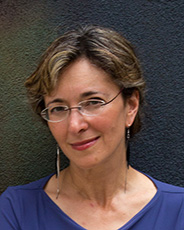
Author Nancy Pick ’83
(Mandy Demuth)
But the times, they are a-changin’. As Amherst diversifies, the college recognizes that the strict cookie-cutter approach to the curriculum no longer works. The faculty votes out the “New Curriculum” in 1965, and Amherst swings in the opposite direction. Instead of a highly restrictive curriculum, it will offer one with very few restrictions, soon to be known as the “Open Curriculum.”
Amherst’s 150th birthday passes without much hoopla.
